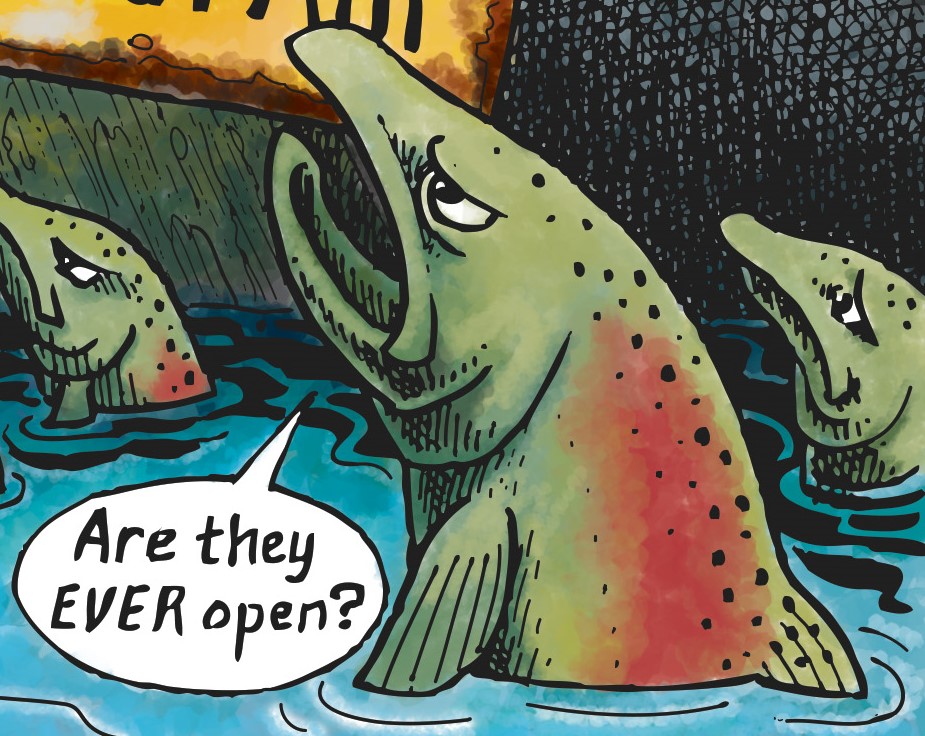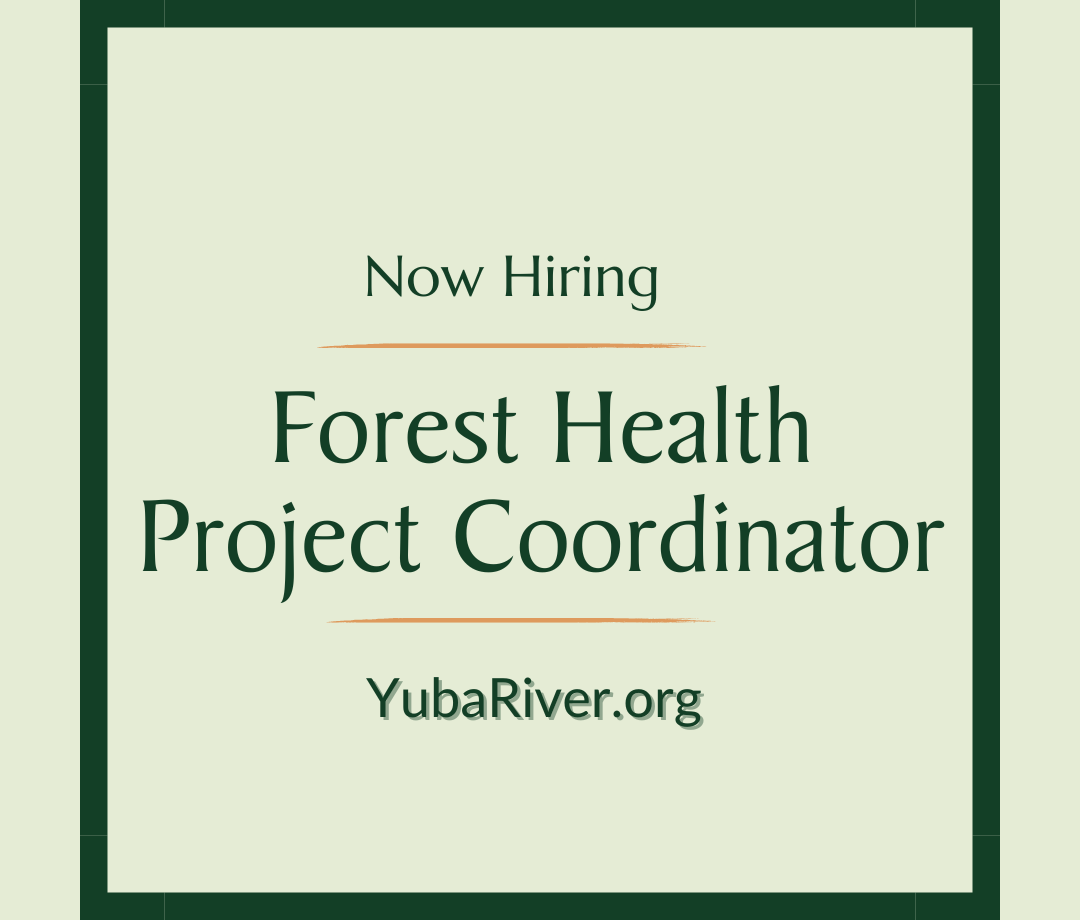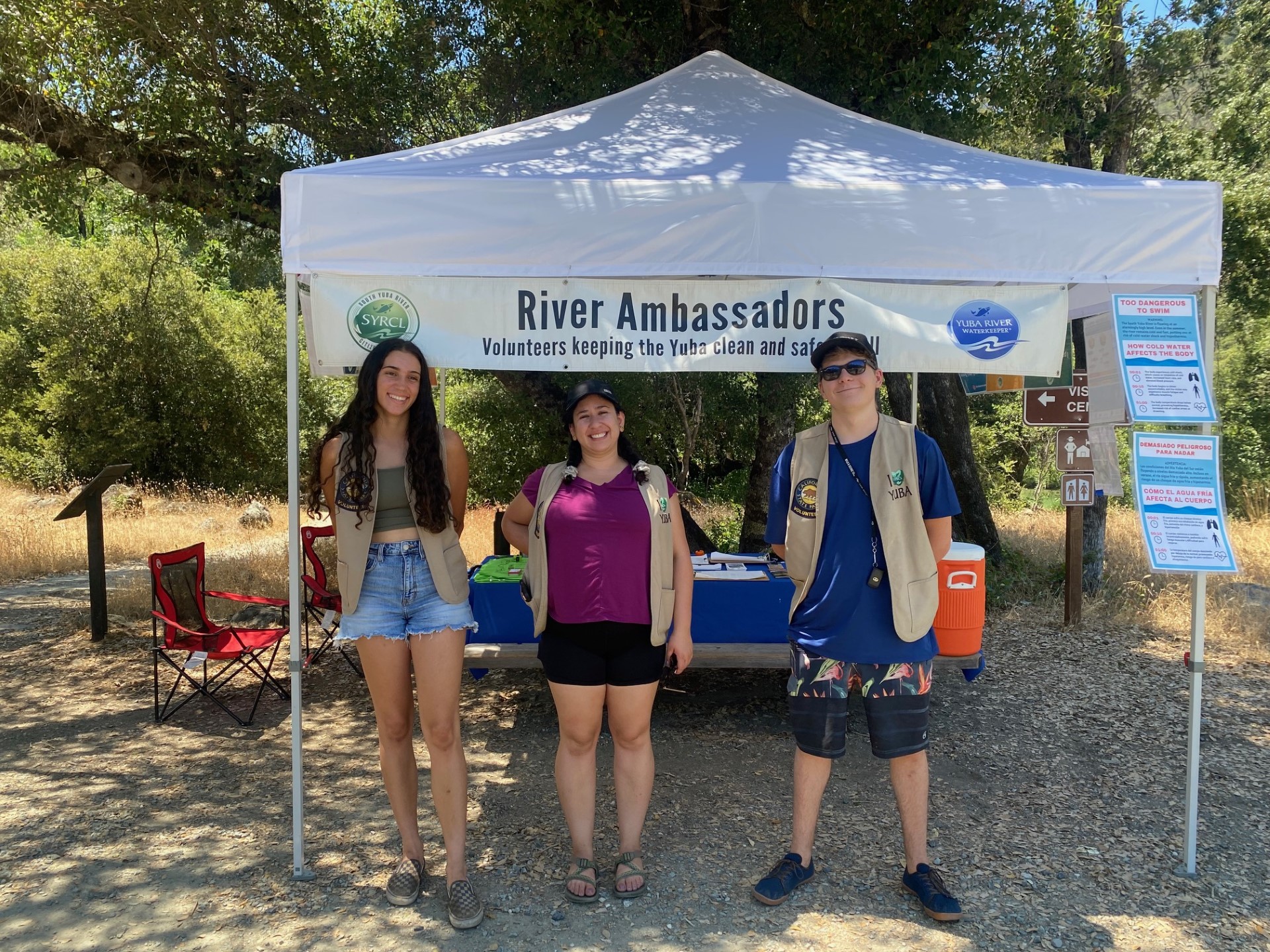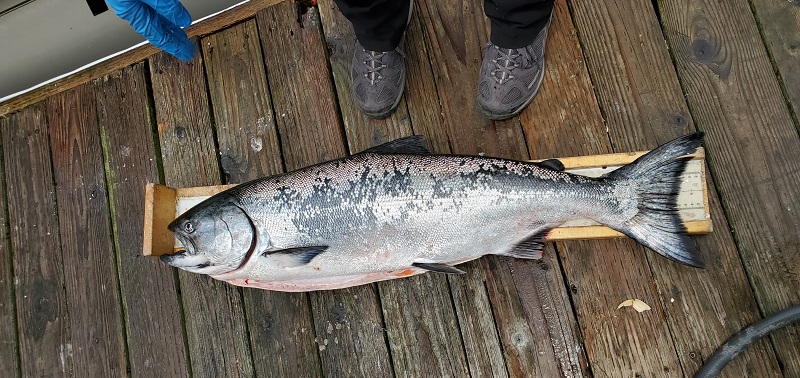Clean the Dam Ladders FAQs
SYRCL is asking the Army Corps of Engineers to clean the fish ladders at Daguerre Point Dam. Do you have questions about fish ladders? The Army Corps of Engineers? The history of Daguerre Point Dam? We have your answers below.
What is a fish ladder?
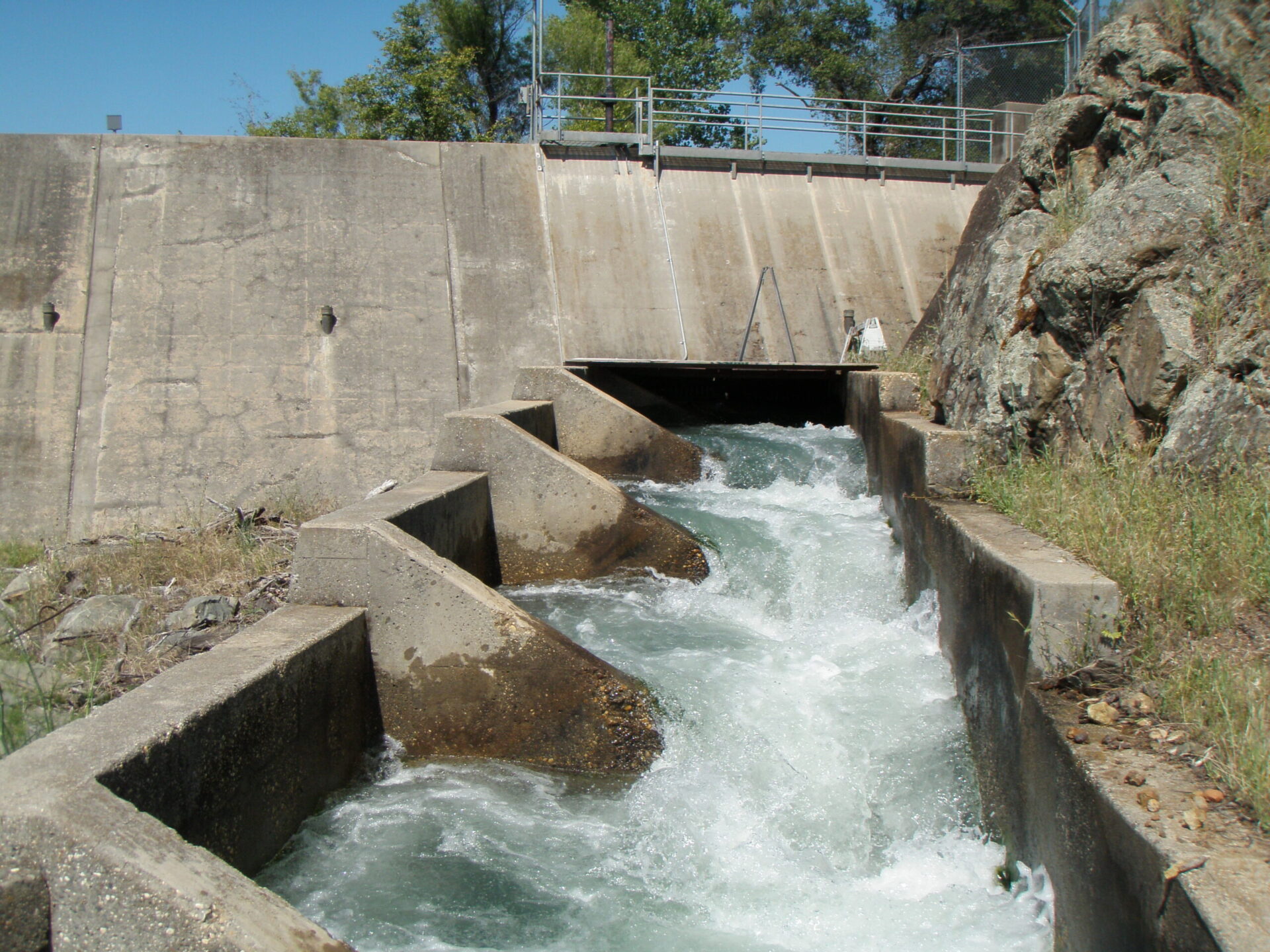
A fish ladder is a structure on or near dams that provides a route for migrating fish to access river habitat upstream of dams. Fish ladders are often a series of “steps” where fish swim or leap to ascend a “step,” then are able to rest before ascending the next “step.” Fish ladders are most effective when adequate water flows through them and they are free from debris. Flow through the ladder must be great enough to attract fish to the ladder, but can’t be so high that it washes them out of it. Fish ladders are also known as fishways, fish passage, or fish steps.
What is Daguerre Point Dam?
Please see our article, “Daguerre Point Dam: A History of Obstructing Salmon” for more information.
Why do salmon need to pass over dams?
In their lifetimes, salmon migrate as juveniles from freshwater high-elevation mountain streams, out to the ocean where they grow to adulthood, then back to the same freshwater mountain streams to spawn. In California, which has approximately 1,500 dams, fish are often blocked from accessing most of their historic high-elevation habitats. Salmon need the cool waters of these habitats to survive, especially as drought causes warmer river temperatures at low elevations. Helping salmon pass dams is essential to ensure their survival.
What does anadromous mean?
Anadromous is a term that describes fish that are born in fresh water, migrate to salt water where they grow to adulthood, then return to freshwater environments to spawn (laying eggs in the river). Salmon and sturgeon are commonly known anadromous fish.
What happens if the fish ladders at Daguerre Point Dam remain blocked?
If the fish ladders remain blocked, our local anadromous fish such as Central Valley Chinook salmon, Green sturgeon, steelhead, and Pacific lamprey will not be able to access miles of river habitat above Daguerre Point Dam.
Who is the Army Corps of Engineers?
The Army Corps of Engineers is part of the United States Department of the Army. They provide engineering services to strengthen national security, reduce risk from disasters, and energize the economy. As such, they often own or operate infrastructure such as levees and dams.
What is the Army Corps’ responsibility at Daguerre Point Dam

The Corps is responsible for maintaining Daguerre Point dam by operating the fish ladders, managing sediment and flash boards, maintaining a gage that measures river stage (flow), and maintaining equipment that can count how many fish ascend the ladders. Additionally, the Corps must ensure the dam functions in accordance with their Congressionally authorized purposes. Lastly, the Corps must ensure that maintenance activities do not jeopardize threatened and endangered fish species. For more information, see this Biological Opinion, issued by the National Marine Fisheries Service.
How can I get involved?
At this time, the best way to get involved is to use your voice by signing onto SYRCL’s letter to the Army Corps, which requests consistent maintenance of the ladders at Daguerre Point Dam. To stay updated on these issues, you can also sign up for SYRCL’s newsletter.
How does this affect me?
Salmon are part of our region and state’s legacy, and they should be part of our future. Historically, salmon runs were so dense that it was said one could walk across the river on salmon’s backs. These robust salmon runs fed humans, wildlife, and the forest—by bringing ocean nutrients to high elevation streams. Unfortunately, many of the state’s rivers have witnessed major declines in our native salmon populations. In the Yuba River specifically, only 1% of estimated historic population sizes still exist. Under serious drought conditions, which are becoming more prevalent, salmon and other native salmonids (fish that are related to salmon, such as trout) are at a greater risk of extinction.
How does this relate to SYRCL’s work?
SYRCL envisions a day when salmon swim freely from the summit to the sea—liberated from the threat of extinction and restored to their ecological prominence in our state’s natural heritage—and once again provide jobs, world-renowned fishing, and a source of healthy food. SYRCL plans and restores fish habitat in the lower Yuba River, educates the public to increase awareness regarding Yuba salmon restoration, participates in regional partnerships regarding fish management, and advocates for volitional fish passage, which would give salmon access to their historic habitats.
Sign the letter and tell the Army Corps of Engineers to Clean The Dam Ladders!
Did you enjoy this post?
Get new SYRCL articles delivered to your inbox by subscribing to our ENews.

